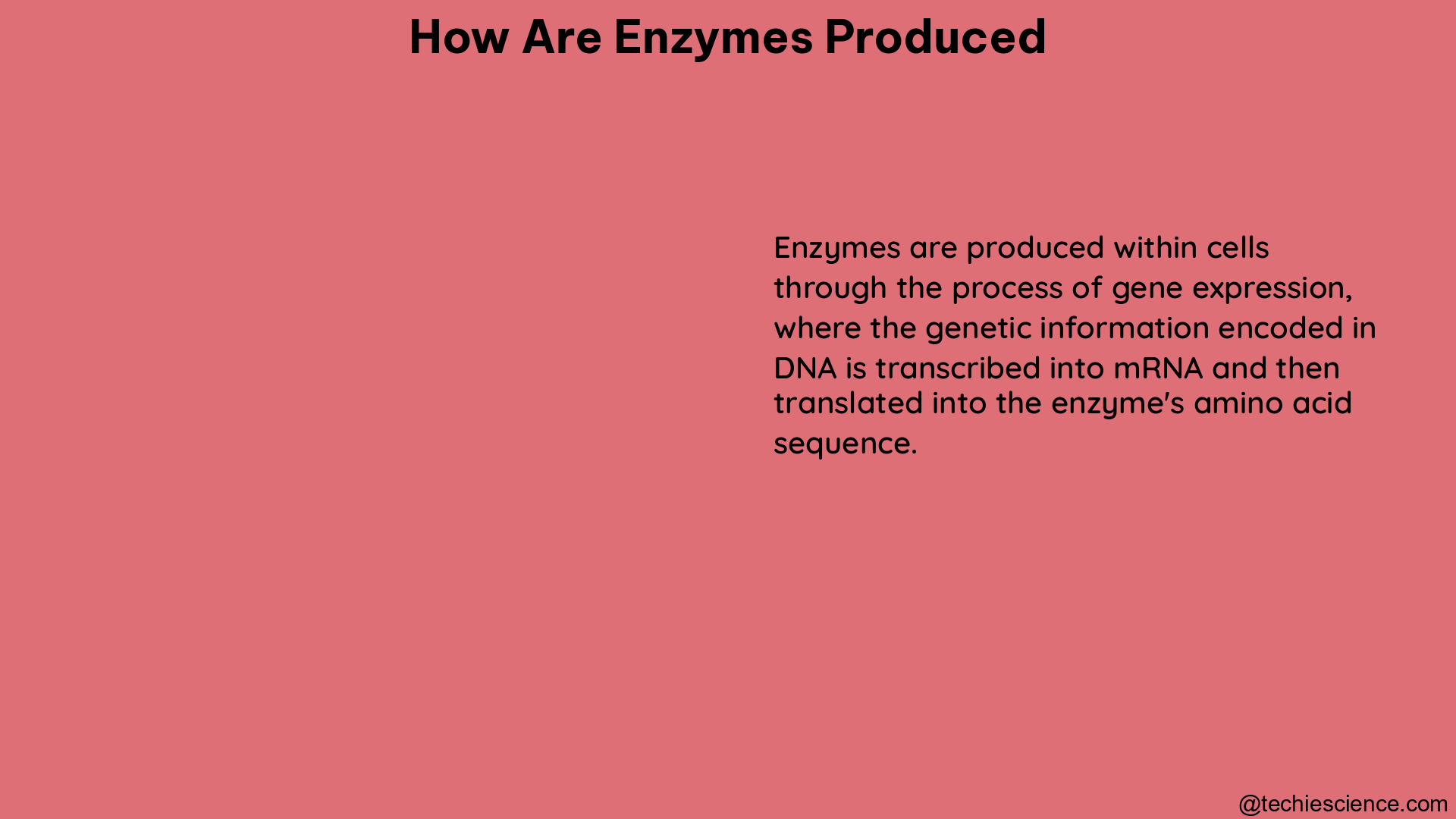Enzymes are essential biological catalysts that accelerate chemical reactions within living organisms. Understanding the intricate process of enzyme production is crucial for biologists, biochemists, and students studying life sciences. This comprehensive guide delves into the step-by-step mechanism of enzyme synthesis, providing a detailed exploration of the key stages involved.
Transcription: The Initiation of Enzyme Synthesis
The first step in the production of enzymes is transcription, where the genetic information stored in a gene is used to create a complementary RNA molecule called messenger RNA (mRNA). This process is initiated when the enzyme RNA polymerase binds to the DNA at the promoter region of the gene.
- RNA polymerase is a multi-subunit enzyme responsible for synthesizing mRNA from a DNA template.
- The promoter region is a specific DNA sequence that serves as a binding site for RNA polymerase, marking the starting point of transcription.
- Once bound, RNA polymerase moves along the DNA, unwinding the double helix and using one of the DNA strands as a template to synthesize the complementary mRNA molecule.
- The mRNA molecule carries the genetic instructions for the production of a specific enzyme, including the sequence of amino acids that will make up the enzyme’s polypeptide chain.
Translation: Transforming mRNA into Proteins

The next step in enzyme synthesis is translation, where the information encoded in the mRNA is used to direct the assembly of amino acids into a polypeptide chain, which will ultimately form the enzyme.
- The mRNA molecule travels from the nucleus to the cytoplasm, where it binds to ribosomes, which are complex structures composed of RNA and proteins.
- Ribosomes read the sequence of codons (three-nucleotide sequences) in the mRNA and use them as a template to assemble the corresponding amino acids into a polypeptide chain.
- This process is facilitated by transfer RNA (tRNA) molecules, which carry specific amino acids to the ribosome and help to form the peptide bonds between them.
- As the polypeptide chain is synthesized, it begins to fold into its three-dimensional structure, which is crucial for the enzyme’s catalytic activity.
Post-Translational Modifications: Finalizing the Enzyme
After the polypeptide chain is synthesized, it undergoes a series of post-translational modifications to become a fully functional enzyme.
- Folding: The polypeptide chain folds into its unique three-dimensional structure, which is essential for the enzyme’s catalytic activity. This folding process is often assisted by specialized proteins called chaperones.
- Cleavage of signal sequences: Some enzymes are synthesized with a signal sequence that helps to direct the enzyme to its proper location within the cell. This signal sequence is often cleaved off during the post-translational modification process.
- Addition of cofactors and prosthetic groups: Many enzymes require the presence of additional non-protein components, such as metal ions or organic molecules, to be fully active. These cofactors and prosthetic groups are often added during the post-translational modification stage.
- Covalent modifications: Enzymes may undergo various covalent modifications, such as the addition of phosphate groups, acetyl groups, or other chemical moieties, which can regulate their activity, stability, or localization within the cell.
Enzyme Assays: Measuring Enzyme Activity
To understand the function and regulation of enzymes, scientists use a variety of techniques known as enzyme assays. These assays can be classified into two broad categories: biochemical and neurochemical, and morphological.
Biochemical and Neurochemical Assays
- These assays are used to measure the differences in enzyme activity between different regions of the brain or between healthy and diseased tissues.
- They often involve the use of artificial or natural substrates and the measurement of the rate of product formation or substrate consumption.
- Examples include fluorescence-based assays, absorbance-based assays, and coupled enzyme assays.
Morphological Assays
- These assays are used to reveal qualitative differences in enzyme activity that are associated with specific pathologies or anatomical regions.
- They often involve the use of histochemical or immunohistochemical techniques to visualize the localization and activity of enzymes within tissue samples.
- Examples include enzyme histochemistry, immunohistochemistry, and in situ hybridization.
Enzyme Assay Techniques
Enzyme assays can be performed using a variety of analytical techniques, each with its own advantages and limitations. These techniques include:
- Optical Approaches:
- Fluorescence: Measures the emission of light by a fluorescent substrate or product.
-
Absorbance: Measures the absorption of light by a substrate or product.
-
Magnetic Resonance Approaches:
- Nuclear Magnetic Resonance (NMR): Measures the magnetic properties of atomic nuclei.
-
Electron Paramagnetic Resonance (EPR): Measures the magnetic properties of unpaired electrons.
-
Mass Spectrometry Approaches:
- Matrix-Assisted Laser Desorption/Ionization (MALDI): Measures the mass-to-charge ratio of ionized molecules.
-
Electrospray Ionization (ESI): Measures the mass-to-charge ratio of ionized molecules.
-
Physical Sampling Approaches:
- Microdialysis: Collects substrates and products from biological samples.
- Electroosmotic Sampling: Collects substrates and products from biological samples using an electric field.
Each of these techniques has its own strengths and limitations, and the choice of method depends on the specific requirements of the enzyme assay, such as sensitivity, selectivity, and the availability of instrumentation.
Conclusion
In summary, the production of enzymes is a complex and tightly regulated process that involves the steps of transcription, translation, and post-translational modifications. Understanding this process is crucial for researchers and students in the field of biology and biochemistry. The use of enzyme assays, with their diverse analytical techniques, allows scientists to measure and study the activity of enzymes in various biological systems, providing valuable insights into their function and regulation.
References:
– Enzyme Assays: A Practical Approach (2nd Edition) by Robert Eisenthal and M.J. Danson
– Enzyme Kinetics: Principles and Methods by Hans Bisswanger
– Enzyme Kinetics and Mechanism by Paul F. Cook and W.W. Cleland

Hello, I am Bhairavi Rathod, I have completed my Master’s in Biotechnology and qualified ICAR NET 2021 in Agricultural Biotechnology. My area of specialization is Integrated Biotechnology. I have the experience to teach and write very complex things in a simple way for learners.